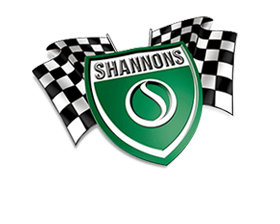2021 Shannons '40th Anniversary' Timed Online Auction
Lot
160
1962 Austin-Healey 3000 BT7 MKII Roadster
Result: PASSED IN
Location: Melbourne
Passed In
Specifications
| Engine | 2912cc in-line six cylinder |
|---|---|
| Gearbox | Four-speed manual with overdrive |
| Body Work | Convertible |
| Colour | Black over red |
| Interior | Black |
| Trim | Leather |
| Wheels | Wire spoke |
| Brakes | Disc/Drum |
Description
This lot is no
longer
available
The Big Healey was - and still is - one of the best-looking sports cars to come out of post-war Britain, with a macho image due in part to the relatively unsophisticated nature of the car (with its live rear axle, separate chassis, and basic steering) but also thanks to its mechanical toughness. However, it was the Big Healey's competition successes that really carved out its reputation, taking numerous wins in many important events as BMC's frontline rally weapon, with the likes of Pat Moss, Paddy Hopkirk, Rauno Aaltonen and Timo Makinen at the wheel. Originally marketed in 100/4 guise, from 1956 the C-Series six-cylinder engine from the Austin Westminster was installed to create the 100/6 but it wasn't until the 3000 arrived in 1959 that performance was restored to earlier levels and new front disc brakes were also a big advantage. The 3000 saw Abingdon adopt Girling disc brakes on the front wheels, while the stylish body was once again available in both two-seater (BN7) or two-plus-two (BT7) guises, the majority optioned with wire wheels and overdrive transmission. The C-series six-cylinder’s capacity rose from 2639cc to 2912cc, resulting in a noticeable jump in both power and torque. In 1961 BMC further revamped the 3000, adding a third SU carburettor and raising power even further to 132 bhp at 4750rpm. Shortly after the Mark II’s introduction a revised gearbox casing was adopted, resulting in a more positive gear-change. The following year saw perhaps the most radical revision of the 3000 yet, one aimed squarely at a new breed of buyer for whom comfort was just as important as performance. The new BJ7 Convertible saw the original flat glass replaced with a proper wraparound windscreen, wind-up windows, and a decently constructed hood, plus the BT7’s 2+2 cockpit layout. Responding to criticism that the triple carburettor set-up was hard to keep in tune, BMC reverted to twin SUs but, thanks to revised manifolds, peak power remained virtually unchanged. Sometimes referred to as the Mark IIA, the BJ7 sold well in its two years of production, with 6113 leaving the Abingdon factory, the vast majority destined for the USA. The Big Healey remains a most sought-after sports car, a sound investment, and a source of great pleasure for the fortunate owner.















































